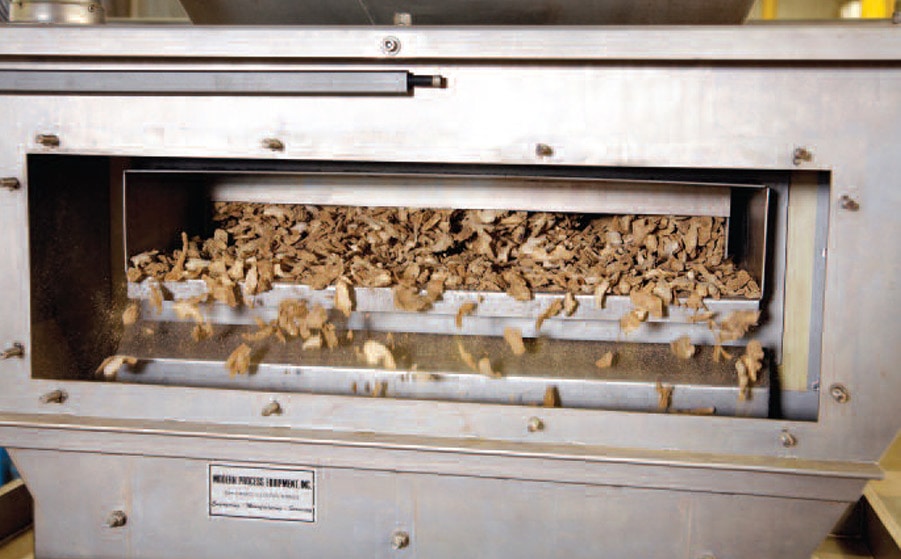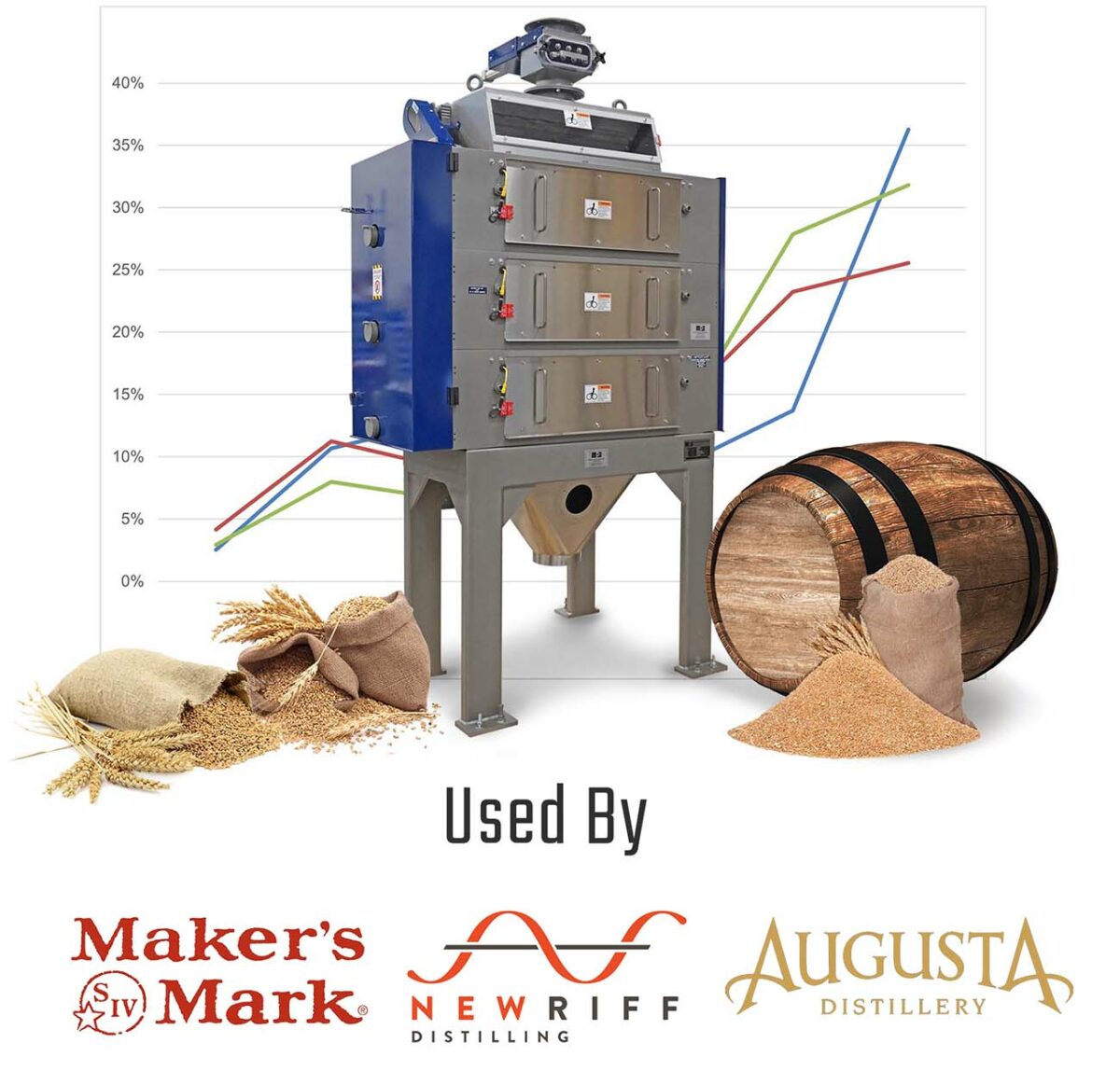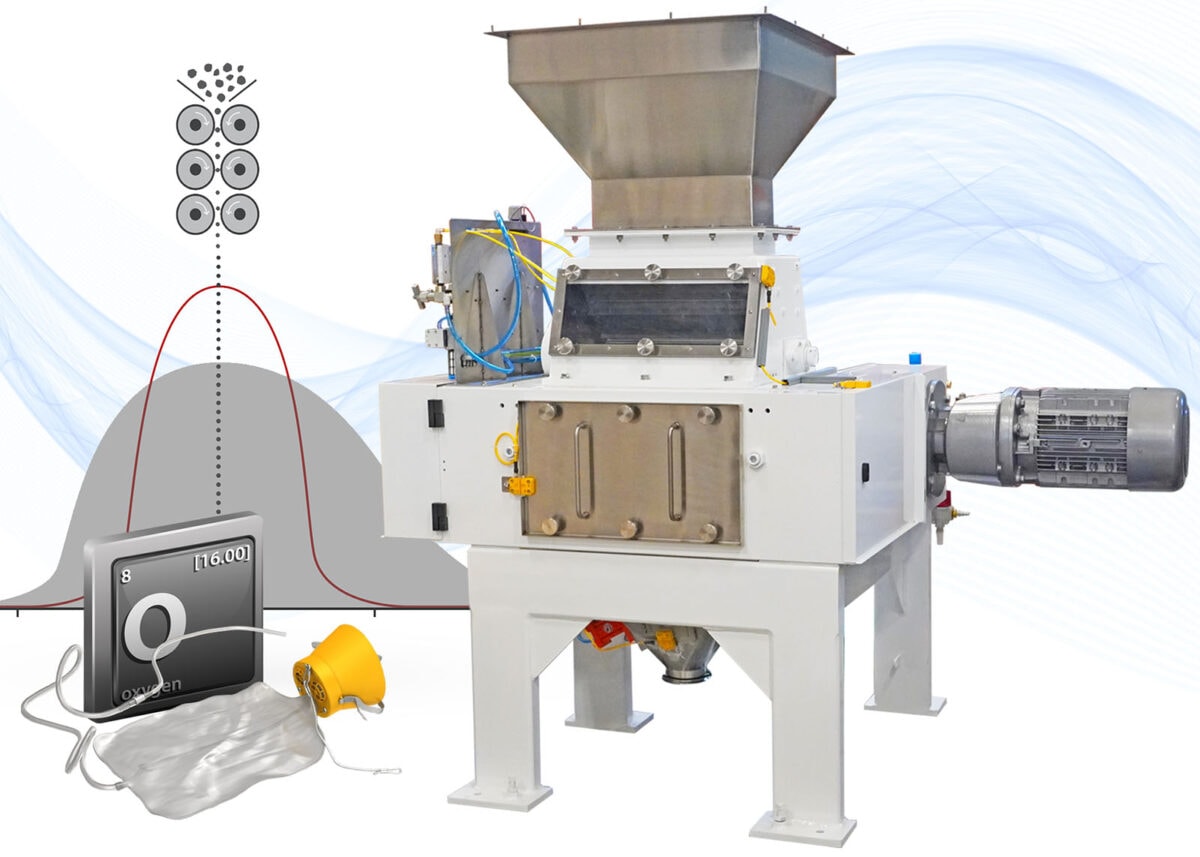Vibratory Feeder is the Spice of Success
Since 1947, Van de Vries Spice Corp., East Brunswick, N.J., has been processing and supplying high-quality food ingredients for the food manufacturing, bakery supply, and food distribution industries. The company provides custom packing and private labeling services and produces spice and seasoning formulations; gravy, soup, and dry-sauce mixes; custom coffee and tea flavorings; and many other products. When making a custom coffee or tea flavoring, the company mills and screens the specified spice to the required particle size range and then packages it for shipment to the customer or sends it to a blending station for further processing. In the past, the mill that the company used to reduce the spices produced too many overs and unders, which minimized the usable yields and kept production costs high. To improve the milling and screening operation, the company worked with an equipment supplier to select a new mill and other equipment, including a vibratory feeder for feeding the diverse spices to the mill.
Problems Producing Flavorings
To make the coffee and tea flavorings, the company uses a variety of spices that have a wide range of initial sizes and material characteristics. The spices range from small, free-flowing peppercorns and cloves to large difficult-flowing cassia sticks and ginger, whose roots tend to lock together during processing.
In the past, to make a coffee or tea flavoring, the company loaded the required spice into a large feed hopper installed above a hammermill. The spice continuously discharged from the hopper and was fed into the hammermill for size reduction. The spice then discharged from the hammermill and was conveyed to a screener that re- moved the overs and unders, leaving just the usable material. The onsize spice was passed through magnets and a metal detector, then was either conveyed to the packaging operation or the blending station where it was blended with other spices or applied directly to the coffee or tea before packaging.
Over the years, as demand for the coffee and tea flavorings increased, the company began experiencing problems with the milling and screening operation. “The hammermill we were using produced a wide range of grind with a high percentage of fines,“ says John Blackman, Van de Vries Spice director of strategic planning. “When producing flavorings for the tea in- dustry, we want a coarser material be- cause a fine material tends to leach through a tea bag into the tea. The hammermill produced a usable yield of only about thirty percent, which meant we had to mill a lot of stock material to get what we needed.
“That left us with a lot of oversize and undersize material that we had to store and later reprocess, repurpose, or discard. Additionally, the hammer- mill didn’t consistently produce a uniform particle size for all the spices because it wasn’t designed to handle materials with such different shapes and textures.”Having to mill extra material required additional time and stock material, which kept the milling operation’s efficiency low and production costs high. The company realized it needed to re- place the hammermill with a mill that could produce more uniform particle sizes, tighter distribution ranges for all the spices, and higher usable yields.
Need for New Milling System
In late 2007, the company contacted Chicago-based size-reduction equipment supplier Modern Process Equipment (MPE) about replacing the hammermill and upgrading the ancillary equipment used in the milling and screening operation. The company sent a sampling of the varied spices to the supplier’s facility, where milling tests were performed. The results led the supplier to recommend its IMD 888F Gran-U-Lizer roller mill. The roller mill has three sets of vertically stacked opposing rollers that are de- signed to incrementally reduce a material as it moves by gravity from the mill’s top inlet through the rollers to the bottom outlet.
To ensure that the mill functions properly, the supplier typically specifies a standard rotary feeder that feeds materials to the mill at a uniform rate to pre- vent material segregation or blockage from occurring at the inlet. However, because the company’s spices have such differing characteristics, the sup- plier realized that three different rotary feeders would be needed to ensure proper feeding of all the spices. This wasn’t a satisfactory solution. The supplier needed to find one feeder that would handle all the spices so the company could avoid having to shut down the milling operation between product runs to switch feeders.
“We worked with the supplier at their test center and studied all the feeders they brought in and how they handled our materials,” says Blackman. “The tests showed us that an Eriez vibratory feeder was the most versatile. It easily fed all of our spices to the mill at an even and consistent feedrate within our required accuracy range. We also determined that the feeder would be the easiest to install, operate, and clean.”
Eriez, Erie, Pa., supplies feeders, screeners, magnetic separators, metal detectors, and other bulk solids handling equipment to the food, plastics, mining, aggregate, and many other industries.
The Vibratory Feeder
The model 48A high-frequency, low- amplitude electromagnetic vibratory feeder consists of a Type 304 stainless steel feed tray and a totally enclosed, patented AC electromagnetic drive. The feed tray, which is 24 inches long, 16 inches wide, and 4 inches deep, has a bolt-on cover with a dust-tight flexible boot that connects to the company’s dust collection system to re- move dust generated during operation. The 60-hertz drive operates at a frequency of 3,600 cycles per minute and produces a vibration amplitude from 0 to 0.060 inch, allowing materials to be fed at rates from 0 to 30 fpm. The vibration amplitude, which consists of both vertical and horizontal components, can be con- trolled manually by adjusting a potentiometer (or POT) or automatically with a programmable PLC.
The feeder can operate at temperatures up to 130°F (54°C) and feed just about any material with particle sizes ranging from 150 mesh up to large chunks — with the exception of some very fine, lightweight materials that tend to fluidize, such as flour, or leafy materials that tend to absorb vibration and not move very well, such as shredded lettuce. (The supplier offers a 30- hertz vibratory feeder for such difficult materials.) The feeder’s capacity can be controlled two ways: by adjusting the feeder’s amplitude, and by regulating the material depth on the tray with an adjustable hopper gate valve. The company synchronized the feeder’s feedrate and hopper gate valve settings to feed the spices at rates of 800 to 2,500 lb/h, with the maxi- mum rate contingent on the down- stream equipment’s operating speeds.
Feeder Helps Improve Flavoring Production Process
In September 2008, the company installed the roller mill, feeder, and other equipment and started up the milling and screening operation. “Since then, we’ve nearly doubled our production rates and are achieving usable yields close to eighty per- cent,” says Blackman. “The feeder does a great job feeding difficult materials, such as ginger, keeping the material moving evenly. The feeder is also easy to use: When switching spices, the production manager or QC manager simply accesses the central PLC and calls up the appropriate spice recipe, and the PLC changes all the equipment settings accordingly. Additionally, the feeder can be adjusted manually during operation to maintain the proper feedrate to the roller mill.”
To prevent cross-contamination, the company only mills and screens one spice per campaign. “We clean the equipment at end of each production run with a cleaning solution and steam, and the feeder is extremely easy to sanitize because all of its material-contact parts are easily accessible,” says Blackman. “The feeder also requires very little maintenance since there are no rotating parts or bearings to lubricate, and its spring system can operate for years before requiring any attention. So far, it’s provided us with trouble-free operation.”
Blackman concludes, “In terms of development and processing, we’re pleased with the service we’ve received from both the roller mill and feeder suppliers. They worked with us hand-in-glove in instituting the equipment, getting it into production, and making sure that it works efficiently, and their engineers have been accessible to us whenever we’ve had questions or needed guidance.”




